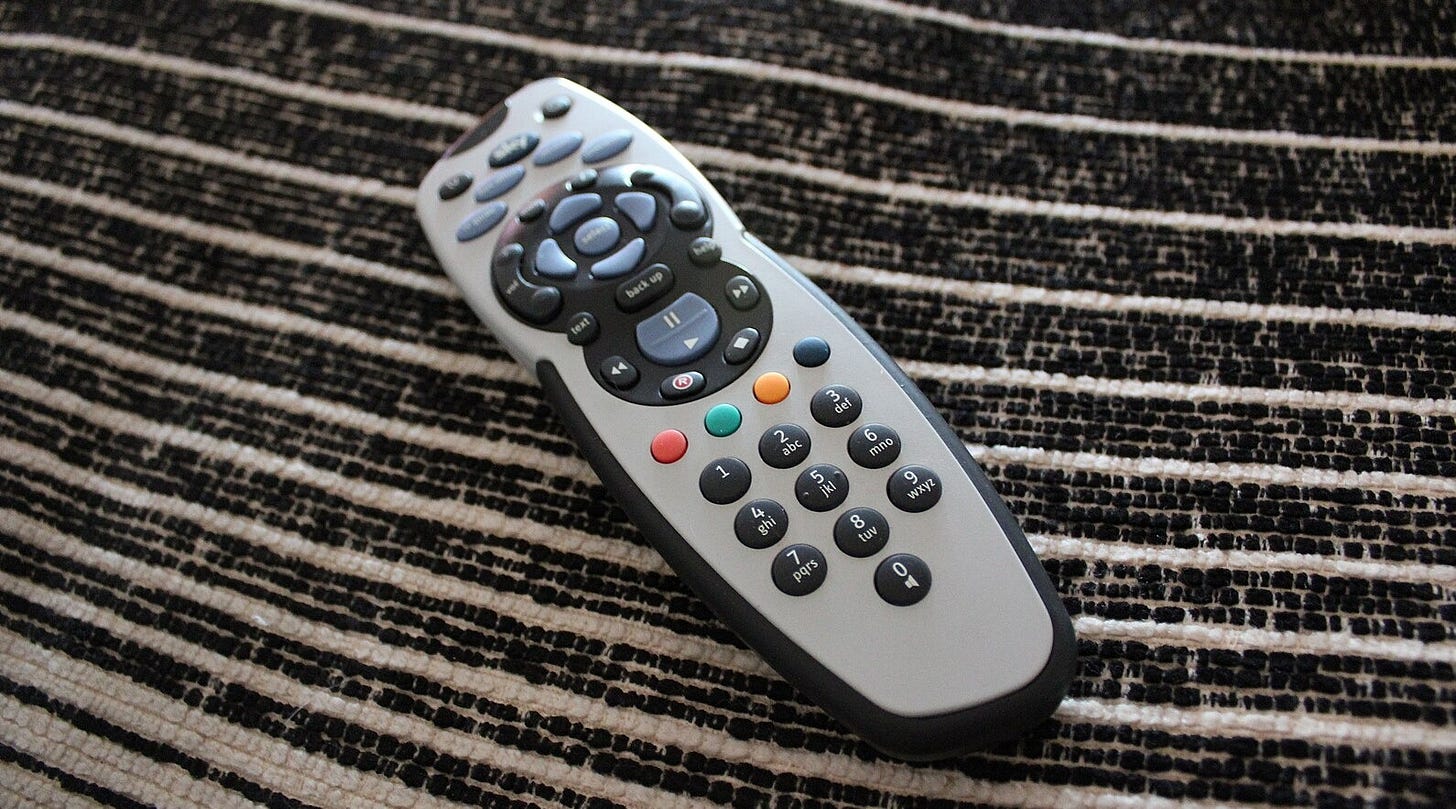Adverts are annoying. We'll miss them.
Streaming gives us what we want, but ad-funded models built common ground
I grew up on television. Pick a number of hours a day, multiply it by pi and you’re not even close. I think at one point my parents tried to impose a screen time cap, but enforcement proved so erratic it threatened to erode their already fragile authority on more important matters. The rule was quietly repealed — like Prohibition — never to be spoken of again.
I watched so much TV that I developed something of a party trick. Depending on certain variables (genre, time of day, terrestrial vs. digital), I could change the channel as the adverts began to roll and return the precise moment they ended. This was a valuable skill in the late 20th century — although it sadly grew obsolete with the rise of digital video recorders and, later, streaming services. Like a town crier in the 1870s or lift operator in the 1950s.
In the era of four channels (I still don’t think Channel 5 counts) and digital TV, programmes were advertising-funded. Commercials themselves were central to the culture. I have never knowingly poured synthetic gravy on my roast dinners, but I can sing you the “Save the Best for Last” jingle used in the Bisto Best ad campaign.
I remember with great fondness the iconic Nike ad for the 1998 World Cup, with the Brazilian team at the airport and “Mas Que Nada” joyously playing in the background. And perhaps most inexplicable of all, the full moon / half moon / total eclipse advert for Jaffa Cakes.
This was partly a reflection of technological constraints. There was no broadband internet, no streaming services and simply much less choice. Linear TV was king and if you missed an episode, you might literally never find out what happened. That’s why shows have those ‘previously-on’ teasers. This affected not just choice but the range of content.
Broadly speaking, advertising-funded models favour consensus — and that’s putting it nicely. Another way to say it is that they lean towards the most inoffensive mush. Companies want to advertise their shampoos and instant gravy to as many viewers as possible. They don’t really care whether you’re watching The Sopranos or The Bill. They want bums on seats, and that means mass appeal programming.
This explains not only the relative flatness and low ambition of many older TV shows, but also why they were so darn family-friendly. Sitcoms and dramas had to entertain not just Mum and Dad but little Holly and Luke. Maybe even Grandma Dorothy and Grandpa Norman if they popped round for tea.
To this day, advertisers generally try to avoid appearing next to news stories that could damage their brand image or associate them with negative emotions. Think murders, war, natural disasters, racism — even bankruptcies. In other words, the news. It is also why X, formerly Twitter, has endured repeated issues with advertisers, who remain wary of proximity to extremist or hateful content and user handles such as ‘HitlerWasRight88’.
The explosion of paid streaming services that began in the early 2010s may or may not have contributed to the demise of the Golden Age of TV, but by no longer needing advertisers, it certainly made it possible to appeal to ever more niche audiences. If people want hundreds of hours of true crime, gore, sci-fi or anime, they can have it. Advertisers no longer wield a veto on taste if funding is derived largely from users themselves.
I’ve written previously about how algorithmic social media and short-form content funnel us into personalised feeds showing mostly what aligns with our existing beliefs. This creates an illusion that everyone sees the same thing and agrees with our view of the world. The result is a fragmented culture with fewer shared experiences and shrinking common ground.
Streaming services add another layer. Unlike traditional TV, where millions watched the same shows at the same time, services such as Netflix and Prime allow us to select from thousands of obscure options tailored to individual tastes. Algorithms learn what we like and serve us more of it. I’m not much one for 'water cooler moments’, but these collective experiences did create a sense, however fleeting, of community and common cultural reference points.
Are we seeing the same thing?
Donald Trump used to be good for ratings. From CNN to The Washington Post, Candidate and then President Trump drew eyeballs, subscribers and, critically, advertisers. This time is different.
With notably rare exceptions, TV adverts were super inane and incentivised lowest common denominator programming. I’m not angling for a return to 1980s family sitcoms and police dramas. I like streaming services! But some of that consensus and shared national conversations had a value of their own. I think we’re already feeling their absence.
I’ll leave you with my favourite ad of the era — the Honda Cog.





Thank you for the nudge to re-watch (too many times) the fantastic Honda advert, which also reminded me of some very frustrating games of "Mousetrap" and, on a much simpler scale, very many attempts to stand dominoes on their ends...
And again thank you for that daily dose of madness (how can I use strikethrough here?) psychotherapy - it makes me feel less isolated with my own "issues"